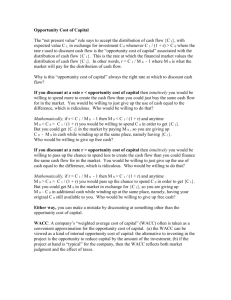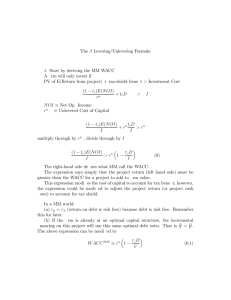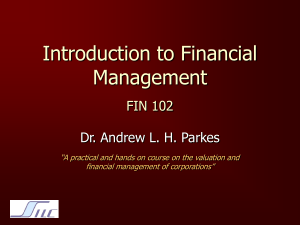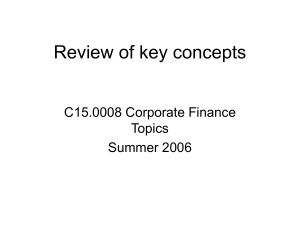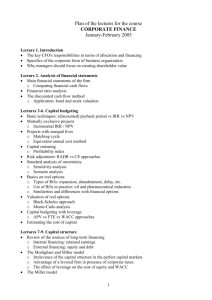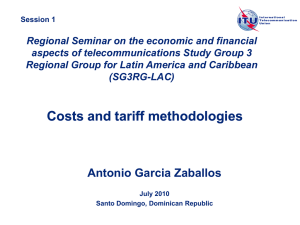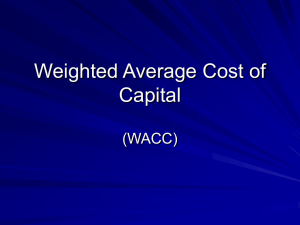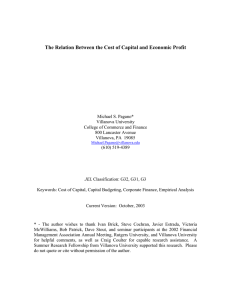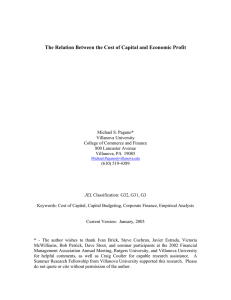IFM9
advertisement
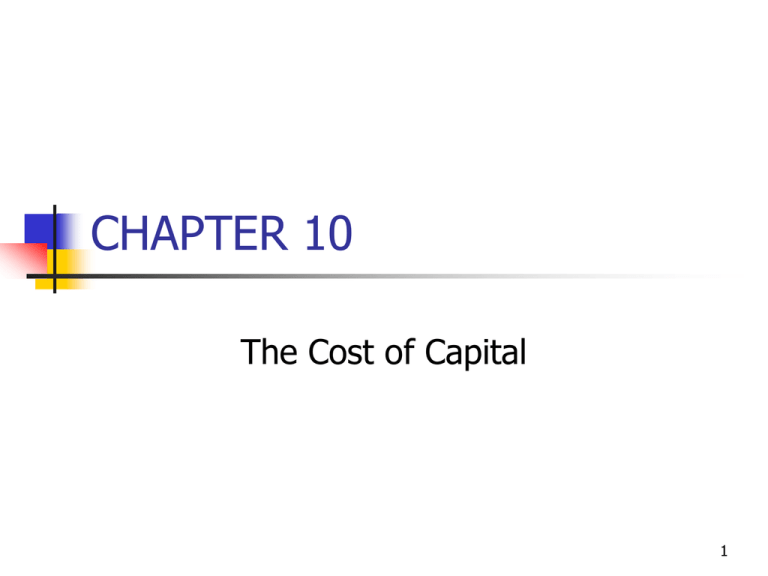
CHAPTER 10 The Cost of Capital 1 Topics in Chapter 10 Individual sources of capital and their cost WACC 2 Cost of Capital Focus on after-tax costs (only debt is affected). We are interested in the cost of new financing (not historical costs). 3 What are the two ways that companies can raise common equity? Issue new shares of common stock. Reinvest earnings that are not paid out as dividends (i.e., retaining earnings). 4 Is there a cost for retained earnings? Earnings can be reinvested or paid out as dividends. Unless the firm can earn a rate of return on retained earnings that is acceptable to its shareholders, it should pay dividends instead. 5 Three ways to determine the cost of equity, rs: 1. CAPM: rs = rRF + (rM - rRF)b = rRF + (RPM)b. 2. DCF: rs = D1/P0 + g. 3. Own-Bond-Yield-Plus-Risk Premium: rs = rd + Bond RP. 6 What is the WACC? The weighted average cost of capital, or WACC, is the annual percentage cost of financing a project of average risk (risk equal to firm’s existing assets). 7 Weights for the WACC The weights are the percentages of financing from each component. If possible, use the “target” weights. Target weights: according to firm’s target capital structure. 8 Weights for the WACC (Cont.) If you don’t know the targets, it is better to estimate the weights using current market values rather than book values. 9 What factors influence a company’s WACC? 1. 2. 3. Market conditions. The firm’s capital structure. The firm’s investment policy. Firms with riskier assets have a higher WACC. 10 Is the firm’s WACC correct for all projects & divisions? NO! The composite WACC reflects the risk of an average project undertaken by the firm. Different projects and divisions may have different risks. The WACC should be adjusted to reflect the risk to get a risk adjusted discount rate (RADR). 11 The Risk-Adjusted Divisional Cost of Capital To estimate each division’s cost of capital, we can: Estimate the cost of capital the division would have if it were a stand-alone firm. OR, Use subjective adjustments to the firm’s composite WACC. 12 What are the three types of project risk? Stand-alone risk Corporate (within-firm) risk Market risk 13 Corporate Risk Corporate risk is the impact of a project on the variability of the firm’s returns. Corporate risk views the firm’s assets as a portfolio, recognizing that a portion of the risk of a new asset will be diversified away. 14 Corporate Risk If investing in a project will cause the firm’s returns to be more stable, the project has low corporate risk. If it makes returns less stable, it has high corporate risk. 15 How is each type of risk used? Stand-alone risk is easiest to calculate. Market risk is theoretically most important in most situations. However, creditors, customers, suppliers, and employees are more affected by corporate risk. Therefore, corporate risk is also relevant. 16

